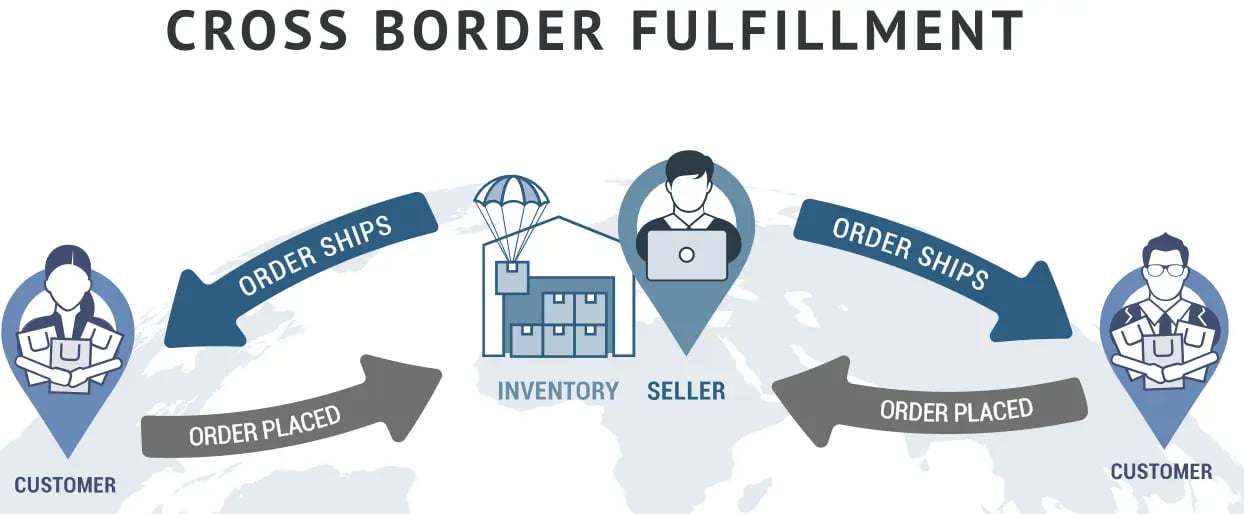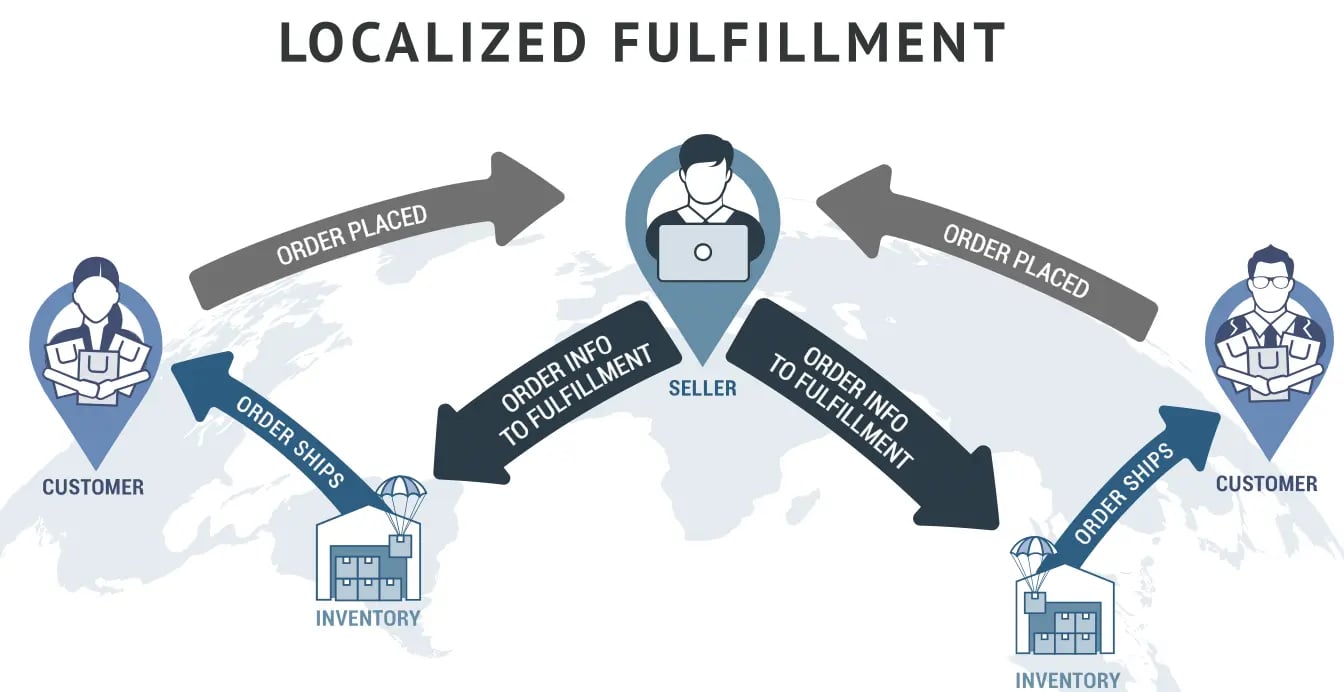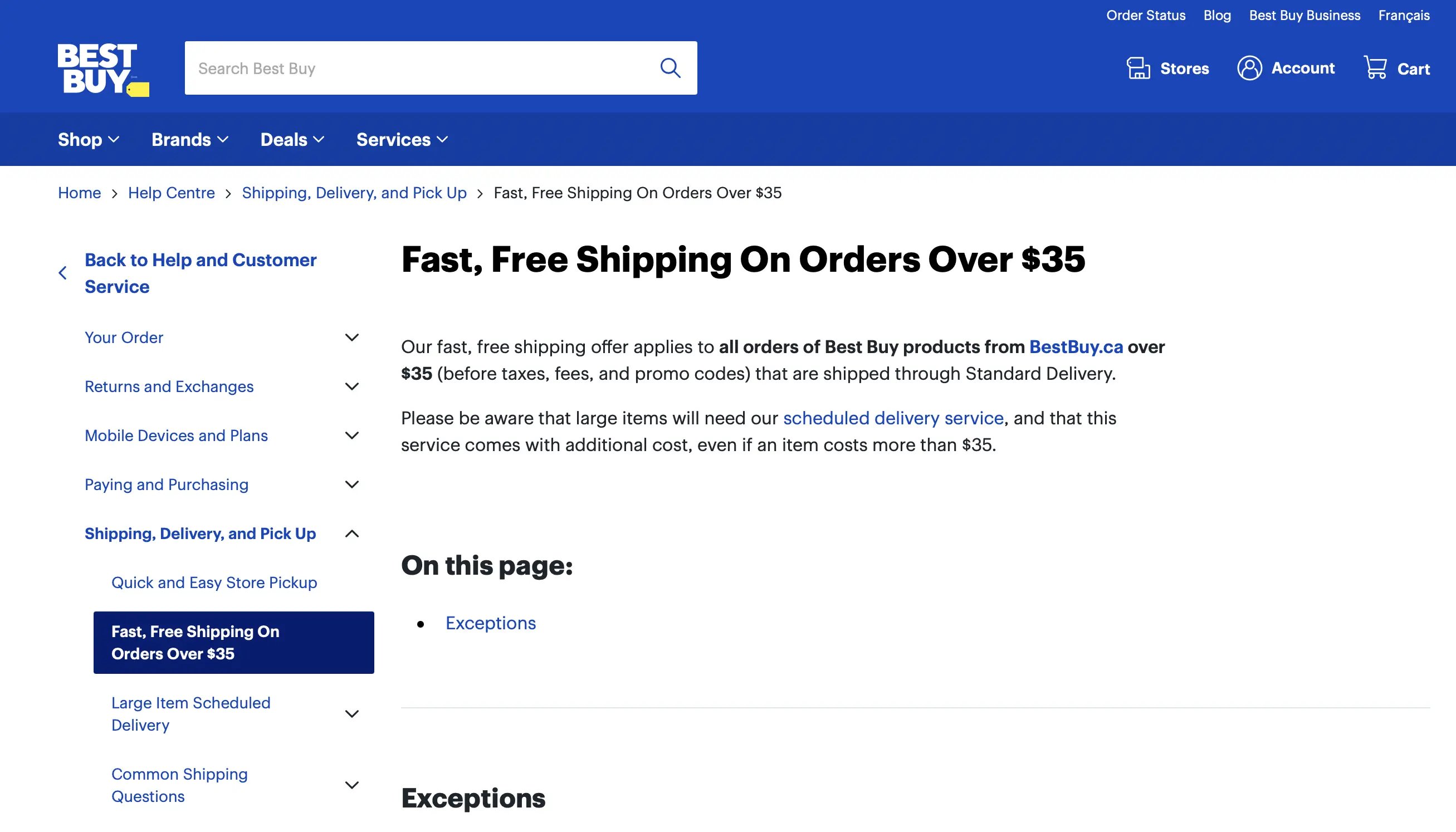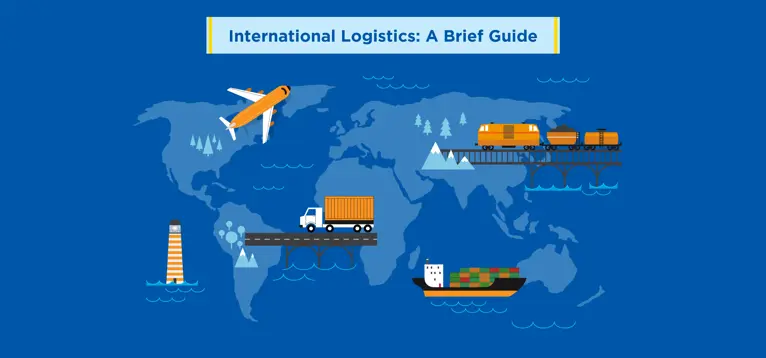Going by the estimates of cross-border eCommerce, international logistics will be anything but the same. It is projected to expand to around $1 trillion in merchandise value by 2030. Technological advancements, globalisation, legislation, and confederations further catapult logistics across international borders.
But new logistical vulnerabilities are emerging with the growth opportunities. Thus, perfecting international logistics becomes vital for businesses looking to grow overseas.
In this article, you’ll learn what international logistics is, how it works, and strategies to optimise it to meet your customer expectations in global markets.
What is International Logistics?
International logistics is the process of moving raw materials and finished goods through a global supply chain network. Cross-border shipping delivers products by crossing at least one international border. It requires businesses to manage supply chain phases in two or more countries.
Let’s look at a simplified international logistical process example:
Say you run an apparel business in Los Angeles. The clothing supply chain mandates you to manage logistics operations spanning many countries. Wherein you source raw material, spin it into fibres, weave it into the fabric, dye, and finish it in Spain.
Next, you ship the fabric internationally to the manufacturing units in Vietnam. Here, the fabric is cut, sewed, and finished into garments. The manufactured clothes are then transported globally to retailers and consumers.
How Does International Logistics Work?
Planning to take a part of your supply chain overseas should be preceded by understanding how exactly it works.
Every enterprise has different international logistics operations. Yet, the key components of international logistics remain more or less the same.
Here’s the overview of how international logistics work:
Planning
Businesses should expand into global territories only after mapping out a full-proof plan. While not a glamorous aspect, planning will save you from expensive risks, inefficiencies, and of course, reverse logistics cost. Especially, when hard times disrupt your supply chain.
Planning should revolve around building a lean and cost-effective global supply chain. For this, you need to get different working pieces of international logistics right.
It requires thinking through:
- Physical assets — procurement, production, shipping, warehousing, raw material handling, inventory management, etc.
- Digital assets — collect, store, organise, and analyse data to improve operations.
- Human assets — personnel who have specialised knowledge of relevant international legislations, tariffs, customs, and local languages of the countries in which your business operates.
By planning and evaluating these functions beforehand, businesses can succeed in establishing an efficient and resilient international logistics system.
Inventory Control
Inventory control should be an ongoing task to ensure an optimal stock level. Done right, it enables you to churn the greatest profit from the least investment in stock without compromising customer satisfaction.
To achieve this, you need a well-rounded strategic plan for inventory management. Inventory optimisation, transportation management, and warehouse management help you do that.
Handling and Packaging of Goods
It deals with the physical flow of finished goods from the distribution network to the end users. An essential aspect of this is calculating the cost of shipping an international order from a single warehouse in your home country.
Cross-border shipping is the easiest and quickest way to work your international orders. Especially if you are a small-scale seller or testing international waters, in-house cross-border shipping works well.

Whereas, third-party logistics providers (3PL) are a more cost-effective fulfilment option if you have a consistent percentage of sales overseas. And if a large volume of orders come from a single country, setting up a localised fulfilment centre proves more beneficial.

Going forward, handling the goods also comes with the responsibility of ensuring its safety. In this context, secure packaging warrants your attention to protect goods during transit.
Transportation
International logistics transportation is tricky, given the different governing bodies and transportation modes. But having reliable logistics partners and freight forwarders can make a world of difference to a global supply chain’s performance. It procures the raw material on time and ships products to customers without delays, delivering an enriching buying experience.
Customs and Import Duties
International logistics comes with rigorous paperwork and extra fees for customs clearance and import in the destination country. Assigning the correct codes to each SKU and double-checking the documents to calculate the import costs is also crucial. Not following these procedures can cause your business to face serious legal action or costly delays.
Best Practices for Optimising International Logistics
If you are interested in branching out to international markets, here are some best practices to optimise your international logistics operations.
Standardise Your Cross-Border Shipping Policy
When it comes to a positive international shopping experience, transparency is the key. And one of the best ways to offer it is through your international shipping policy.

Displaying it on your website will help you:
- Manage foreign customers’ shipping expectations from you.
- Provide clear-cut information on the process, time, and fees.
- Communicate the possible mishaps during the process.
What elements ideally should be there in your international shipping policy?
- Available delivery locations
- International shipping options and service levels
- Duty, tax, fees, and shipping refund policy
- Estimated package handling time
- Order date cut-offs
- Potential service interruptions
Reduce International Logistics Transportation Costs
Transportation costs constitute around 40-50% of the total logistics costs and 4 to 10% of the product’s selling price. Thus, they make up the critical KPIs you must closely look into. Otherwise, the hidden costs can rapidly eat away your profit margins, thus impacting the company’s bottom line.
To reduce your international logistics transportation costs:
- Find the best and most cost-effective route using intermodal or hybrid transport.
- Consolidate different shipments into one, as larger shipments are shipped at lower rates. Go FCL (Full container load) wherever possible.
- Plan ahead to avoid missed deadlines or additional expenditures on air freight.
- Utilise transportation management solution (TMS) to dynamically optimise routes, trailer space utilisation, and costs.
Improve Real-time Visibility
Real-time and end-to-end supply chain visibility is an absolute game-changer. It assists you in monitoring the goods as they move through different stages. So businesses can exercise better control and manage their international logistics operations.
So how does a company improve supply chain visibility in international logistics?
- Use advanced analytics to understand where your supply chain operations fall short.
- Establish clear and concise communication channels that connect all supply chain stakeholders.
- Deploy technology solutions, such as IoT technologies, to collect data on the movement, storage, and delivery of goods.
Facilitate Open Communication
Effective and free-flowing communication between departments is vital to creating agile international logistics. The seamless information interchange ensures completion of time-bound tasks without any lag.
Here's how:
- Use the right tools to create enterprise-wide real-time, transparent communication channels.
- Create a single point of information to speed up your communication.
- Pay close attention to secure data transmission.
- Have some overlapping hours to communicate with supply chain vendors across various time zones.
- Have at least one translator on your team for interacting with partners with different native languages.
Choose an International Logistics Partner
Working with a fulfilment partner who is in the same country as your cross-border customers can be beneficial in many ways. They can help you:
- Save costs on transporting goods by having fulfilment partners closer to your warehouse.
- Clear customs through proprietary customs clearance networks and save on taxes and duties.
- Reduce shipping costs and expedites goods delivery.
Wrapping Up
Tapping into international markets is lucrative yet also challenging. But with a bit of help from a reliable international logistics company, businesses can overcome these challenges.
PACK & SEND specialise in custom regulations, international couriers, final delivery, reverse logistics, cross-border shipping and fulfilment, logistics packaging, etc. With our technology-backed logistics solutions, you can launch in overseas markets with confidence.
Is your business ready to go global? Connect with us to meet all your logistics needs.
Image Sources: Fitsmallbusiness, Bestbuy.ca
